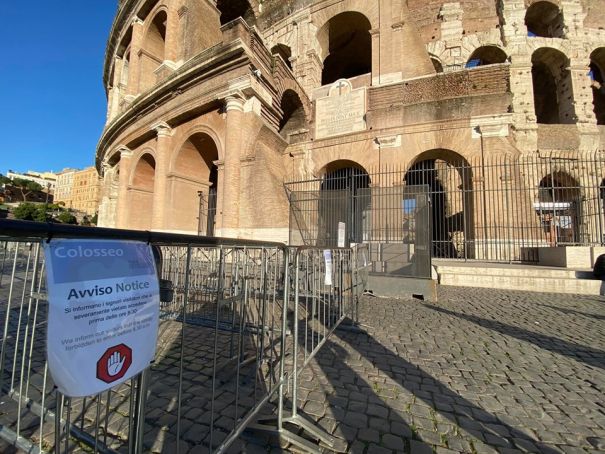Museums in Rome and across Italy hit by impact of Coronavirus outbreak.
Italy boasts the world's highest number of UNESCO World Heritage Sites (55), with experts at odds over the percentage of world art held in the country - some say one third, some say 70 per cent.
Whatever the figures, Italy's peerless artistic and cultural heritage took a major hit yesterday with the sudden and immediate closure of all museums, galleries and archaeological sites - until 3 April - in a desperate bid to contain the country's Coronavirus outbreak.
This unprecedented decision affects Rome - the city most associated with museums in Italy, perhaps in the world - particularly harshly.
The capital's museums - houses and halls of wonder - have fallen silent.
The news has arguably had the most serious repercussions for the Scuderie del Quirinale whose ground-breaking Raphael exhibition, in the planning for several years, opened to the public - on a limited basis at that - for just three days before closing.
The museum will today undertake the arduous task of contacting those who purchased tickets in advance - reportedly 77,000 people - many of them from all over the world.
The city's opera house is shuttered up, its performances cancelled for the month. The Vatican Museums, home to the Sistine Chapel, are also closed.
Open-air sites including the Colosseum, the Roman Forum and the Palatine Hill were not immune from the decree either. They too lie shut, their glorious ruins home once more to wild flowers and uninterrupted birdsong.

Such is the exodus of tourists, and Romans staying at home, that in addition to being able to see Rome in all its splendour, it is also possible to hear the city.
The depleted chatter and hum of crowds, the reduced white noise of traffic, means that one can hear the fountains splash, a phenomenon normally associated with dawn or the Ferragosto holiday in high summer.
The decree, which also means the closure of Rome's libraries and the cancellation of all concerts and events, is an extraordinary but vital measure to reduce the spread of the Coronavirus outbreak which, to date, has resulted in 7,375 infections and 366 fatalities in Italy, mainly in the north.
The move is part of emergency legislation that puts 16 million people in quarantine in northern Italy and follows an earlier decree ordering the closure of all schools and universities throughout Italy.

Describing the measures as "painful but necessary", Italy's culture minister Dario Franceschini has launched the #IORESTOACASA (I stay at home) campaign designed to bring Italian culture to people via their television screens.
A growing number of Italian museums, artists and performers are signing up to this spontaneous initiative which has the dual effect of promoting culture while encouraging Italians to remain at home.
Meanwhile Italy's magnificent museums, grandiose ruins and centuries-old masterpieces retreat to a silent, visitor-free world. For a while at least.
Tramont_ana / Shutterstock.com

















